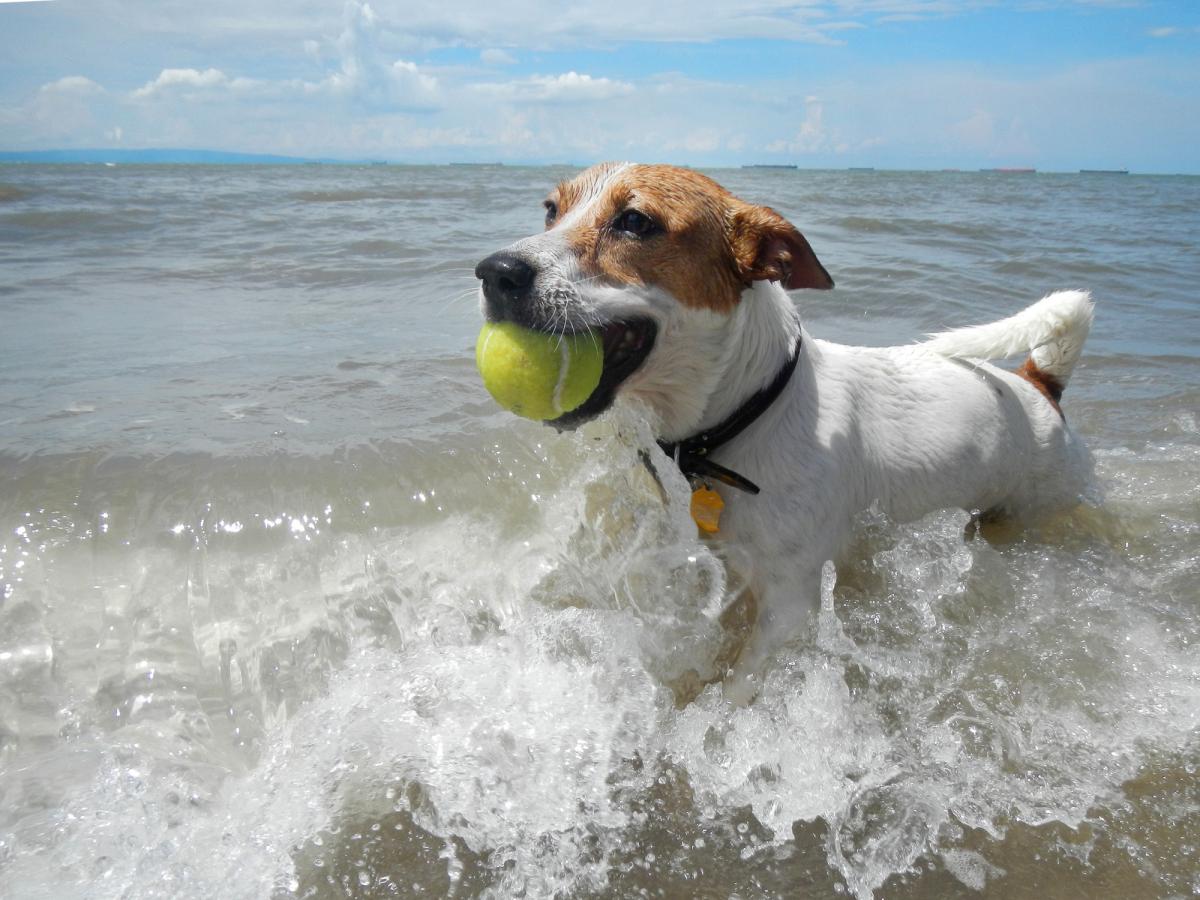
Before you pack up your pooch and head to the beach, make sure you and your pup are ready for the day's adventures. For most dogs, getting to run around in the sand, dip into the waves, and fetch balls out of the water is the best day ever! Here are some tips to ensure that you and your dog have a fun and safe beach experience.
1. Make Sure You're (Both) Welcome
Check with your local beaches to check their policies in regards to dogs on the beach. Some may not allow them. And those that do typically have certain times of the year and/or times of the day that dogs are allowed.
2. Doggie Beach Essentials
Before heading out, be sure to pack for your pooch. Essentials include: extra towels, a good supply of fresh water, leash, umbrella (make sure your pup has shade), doggie sunscreen (yes, you can actually get sunscreen specifically made for dogs), a fresh water spritz bottle (to cool off your pup), and toys for fetching or tug-o-war. Bringing along some doggie shampoo is also a good idea (in case the beach has outdoor showers). And of course, plenty of doggie poop bags.
3. To Leash or Not To Leash
It's important to find out whether the beach requires your furkid to be on leash or is allowed to go off-leash. Bring a long leash no matter what, but know ahead of time if there will be an area where a leash isn't necessary. If they can be off-leash, be sure your dog is under your voice control. Some people on the beach (as well as easily frightened children) may be less dog-friendly than others, so be mindful of whom your dog might be approaching to avoid any sort of snafu. Similarly, there will likely be other dogs off-leash as well. So careful monitoring is necessary to make sure everyone plays nice.
4. Keep a Close Watch
Never leave your dog unattended. Even the most well-trained dog can get distracted and decide to chase a seagull or sniff around in someone's cooler. Pay extra special attention to your surroundings and any potential situations that may cause your dog to wander or run off. Follow ALL of the rules set by the beach. You don't want to be the reason that dogs aren't allowed at that particular beach anymore.
5. Water Dog or Not So Much?
If you want to bring your dog to the beach, you probably have a good idea that your furkid likes the water. If this is the first time your dog will be introduced to the water, be sure you introduce him gradually - at his pace. When you bring your pup to the water, if he isn't diving right in, take it slow. Don't force your dog to go in. He may feel more comfortable if you head in first and call him. If you're nervous or unsure, bringing along a dog life vest would be a safe good idea.
6. Quick Safety Checks
Make sure your dog's vaccinations are current and that he's wearing the proper ID. Keep your vet's number on hand just in case something happens. Check the ocean for jellyfish, stingrays, or other potential dangers. It's also a really good idea to set a time limit for your beach trip. A couple hours might be just the right amount of time at the beach, depending on your dog's activity level.
7. Be Wary of Temperature Extremes
Depending on where you are in the country, summer at the beach can bring about two extremes: heat from the sun and a cold, cold ocean. Pay attention to how your dog is acting and responding while he's with you throughout the day, since there could be the potential of either heat stroke or hypothermia.
Some signs of heat stroke in a dog include rapid panting, bright red tongue, thick, sticky saliva, weakness, vomiting, and diarrhea. If you think that your dog has heat stroke, move him into the shade and apply cool (not cold) water all over their body to gradually lower his temperature. Apply ice packs or cool towels to the pet's head, neck and chest only. Allow the pet to drink small amounts of cool water or lick ice cubes. Then take him to the nearest vet.
Some signs of hypothermia in a dog include lethargy, weakness, shivering, muscle stiffness, difficulty breathing, fixed and dilated pupils. If you think that your dog has hypothermia, wrap your dog in towels and blankets that have been warmed by the sun, bring extra fresh water in bottles and leave them out in the sun as this warm water can be applied to your dog to bring his body temperature back up. If your dog has still not stopped shivering and has continued lethargy, bring him to the nearest vet.
As much as we wish, our dogs can't tell us when they're in pain and not feeling good. The above lists are certainly not all-inclusive, so if you notice anything out of the ordinary with your dog's behavior, get him out of the elements immediately.
We can help you find beaches that welcome dogs. Whether you're going on a trip or a stay-cation, finding a beach where you can bring your dog this summer will be a great bonding experience for your dog and your family. Get out there and soak up that fresh sea air - your pooch will be forever grateful for all the fun!
Want to book a trip with your pet or need help planning your trip? Book pet-friendy hotels here, or feel free to give us a call at 919-249-7387 or email us roadtrip@tripswithpets.com.